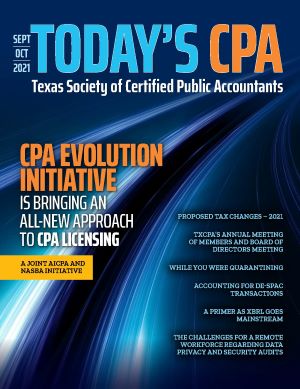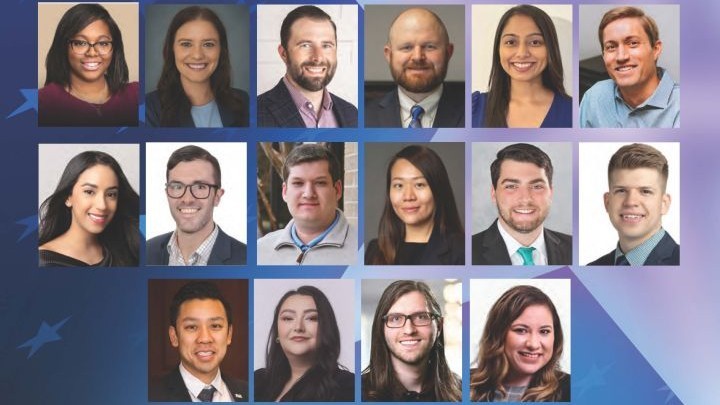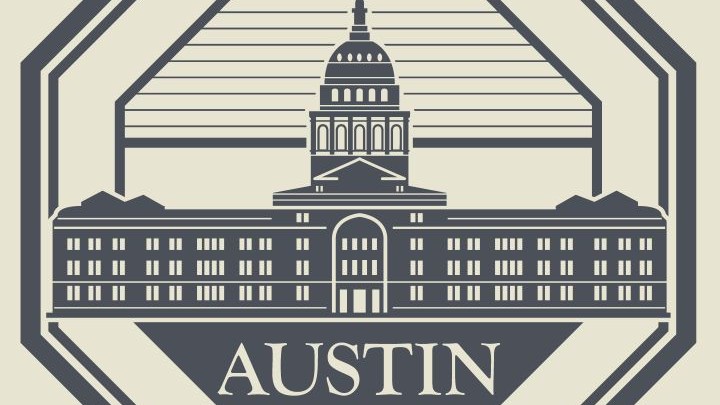While You Were Quarantining
While employers have been pressed to adjust to pandemic-related changes to employment law, there have also been other important employment law developments
By Joe Rivera
The COVID-19 pandemic brought about a number of changes in the law relevant to employers. The Families First Coronavirus Response Act (FFCRA) created a regime of paid leave employees could take for certain COVID-19 related reasons. Not only that, the FFCRA applied to small employers, many of which had little to no experience dealing with paid sick leave.
Employers had to navigate the rules on obtaining a loan under the Paycheck Protection Program, on proper use of the loaned funds and on obtaining forgiveness of the loan.
The American Rescue Plan Act of 2021 included a second or renewed period to opt in to health coverage under the Consolidated Omnibus Budget Reconciliation Act (COBRA) for certain employees whose employment was involuntarily terminated. This Act also provides for premium relief for employees opting in to COBRA coverage.
With all this and more, employers have had a lot to deal with during the pandemic. But with COVID-19 being the hot topic for over a year now, there have been other important developments in the area of employment law that employers and their advisors might have overlooked. The following are my top four developments that employers should know.
1. Even Small Employers Are Now Subject to the Texas Prohibition Against Sexual Harassment and Management
Any lawyer who advises employers has asked new employer clients “How many employees do you have?” Why? The fact that the size of the client impacts various practical aspects of the attorney-client relationship and advice relevant to the employer. But more specifically, every employment lawyer knows that determining what anti-discrimination and anti-harassment laws will apply to a given employer generally turns on the number of employees the employer has.
In particular, 15 or more employees (subject to caveats on number of days worked for a number of weeks in the current or preceding calendar year) has long been the magic number for federal laws such as Title VII of the Civil Rights Act of 1964. Title VII is the federal law that prohibits discrimination or harassment of an employee based on the employee’s membership in certain protected categories, including on the basis of sex and pregnancy.
By case law, “sex” has been interpreted to include protection against discrimination or harassment based on the employee’s non-conformance with norms or stereotypes generally associated with the employee’s sex. It has also been interpreted to cover an employee’s sexual orientation or identity.
The Texas Human Rights Act, as codified in Texas Labor Code, also provides protection for employees against discrimination or harassment based on sex. Tex. Labor Code § 21.051.
The Human Rights Act was modeled after the federal Title VII and has been interpreted and applied consistently with federal law. See Garcia v. Schwab, 967 S.W.2d 883, 885 (Tex. App.-Corpus Christi 1998, no pet.). And by statute, the prohibition of the Texas Labor Code against sexual harassment has, similar to Title VII, only applied to employers with 15 or more employees.
Smaller employers could take some solace in this threshold, knowing that when it came to claims of discrimination or harassment based on sex, they would not have to deal with the morass that an investigation by the Equal Employment Opportunity Commission (EEOC) or the Texas Workforce Commission Civil Rights Division (TWCCRD) can be or litigation that can follow such an investigation.
All that changed on Sept. 1, 2021, with SB 45. SB 45 will add a Subchapter to the Labor Code, which will include the following definition of “employer” related to claims of sexual harassment. “Employer” means a person “who employs one or more employees.” So, effective Sept. 1, 2021, the 15-employee threshold is out the window for sexual harassment claims.
Small employers adjusting to SB 45 would do well to develop anti-retaliation policies and measures as well. Both the Texas Labor Code and Title VII prohibit an employer from retaliating against an employee for reporting harassment or participating in an investigation or proceeding addressing alleged harassment, such as by providing a statement or being a witness.
According to statistics published by the EEOC, retaliation claims as a percentage of claims filed with the EEOC have risen dramatically, with retaliation claims making up over half of the claims filed with the EEOC for the last few years.1
Retaliation claims are evaluated under a “causal link” causation standard, which is easier to meet than the causation standard applicable to the harassment claim itself. Medina v. Ramsey Steel Co., 238 F.3d 674, 685 (5th Cir. 2001). And the employee does not have to be correct or succeed on the underlying harassment claim to have a meritorious for a retaliation. 42 U.S.C. § 2000e-3(a); Payne v. McLemore's Wholesale & Retail Stores, 654 F.2d 1130, 1140-1141 (5th Cir. 1981).
Further, statistics reflect that as many as 81% of women report that they have experienced sexual harassment in the workplace2 and that 72% of employees who have reported sexual harassment to their employer also report having experienced retaliation.3
The prevalence of sexual harassment and retaliation claims combined with SB 45’s expansion of the prohibition against sexual harassment to small employers unaccustomed to dealing with such laws could prove to be fertile ground for EEOC and TWCCRD complaints and lawsuits against such employers. All employers will need to take proper steps to:
• Prevent incidents of sexual harassment;
• Facilitate reports of sexual harassment;
• Investigate reports received; and
• Insulate the employer from liability in the event of an incident of sexual harassment.
This should include regular anti-harassment training, development of appropriate policies such as an anti-harassment policy and a policy facilitating reports of such harassment, and procedures on investigating and handling a report of sexual harassment.
However, the value of these standard protective measures will be less certain under SB 45. Under Title VII, when an employer, once it becomes aware of alleged sexual harassment, takes “prompt remedial action to protect the claimant,” the employer can avoid liability. Nash v. Electrospace Systems, Inc., 9 F.3d 401, 402 (5th Cir. 1993) (emphasis added).
Prior to SB 45, the same was true under the Texas Labor Code. E.g., River Oaks L-M. Inc. v. Vinton-Duarte, 469 S.W.3d 213 (Tex. App.-Houston [14th Dist.] 2015, no pet.). The requirement of “prompt” remedial action allowed a reasonable opportunity to investigate the claim.
SB 45, however, will impose liability for unlawful sexual harassment when the employer or its agents or supervisors (1) know or should have known that the conduct constituting sexual harassment was occurring; and (2) fail to take “immediate and appropriate” corrective action.
Given the conspicuous use of “prompt” with regard to remedial prior to SB 45, the Texas Legislature’s use of “immediate” could be argued to be a change in the law, pressing employers to take action to address sexual harassment claims more quickly.
This could come at the expense of a thorough investigation or, more troublingly, the rights of the accused harasser before sufficient information has been gathered.
2. The Time Period for Making and Targets for a Sexual Harassment Claim Have Also Been Expanded
SB 45 changed, in the context of a sexual harassment claim, two other established principles. First, the Labor Code has required that a claim of harassment or discrimination under the Code be filed with the Texas Commission on Human Rights no later than the 180th day after the date of the alleged harassment or discrimination. Tex. Labor Code § 21.202.
In a deferral state such as Texas, in which a state agency will investigate claims under both state and federal law, this period extends to 300 days if a claim for harassment or discrimination under federal law is made. E.g., Stanley Stores v. Chavana, 909 S.W.2d 554, 557 (Tex. App.-Corpus Christi 1995, writ denied). SB 45 amends the Labor Code to make the filing period for a sexual harassment claim 300 days, regardless of whether a claim under federal law is also made.
Second, neither Title VII nor the Texas Labor Code has previously provided for individual liability for harassment claims. See Garcia v. Shell Oil Co., 355 S.W.3d 768 (Tex. App. [1st. Dist.] Houston 2011, no pet.); Fonge v. United Ins. Co. of Am., No. 14-97-00154-CV, 1998 Tex. App. LEXIS 6421 (Tex. App. [14th Dist.] 1998, pet. denied) (mem. op.).
SB 45 amends the Labor Code to define “employer,” for purposes of sexual harassment, as one who “employs one or more employees” or “acts directly in the interests of an employer in relation to an employee.” The quoted phrase, which is not in the existing Labor Code definition of employer, would seem to create a basis for individual liability against managers, supervisors and other individuals with regard to sexual harassment.
3. Accommodating Disability and Remote Work
The COVID-19 pandemic gave employers a reason to brush up on a number of areas of employment law. The virus presents a possible workplace danger relevant to an employer’s duty to provide a safe workplace under the Occupational Safety and Health Act. Catching the virus in the workplace presented worker’s compensation issues.
The virus also presented various issues under the Americans with Disabilities Act (ADA) in terms of screening employees for the virus and obtaining medical information, requiring employees to get the vaccine for the virus, and with regard to accommodation of disabilities related to the virus.
On this last point, leave and remote working have long been potential accommodations under the ADA. And with the prevalence of remote work during the pandemic, employers might have a more difficult time demonstrating that in person attendance at the workplace is an “essential function” of the job or that allowing an employee to work remotely would impose an “undue hardship“ on the employer. See 42 U.S.C.S. § 12111(8), (10); 42 U.S.C.S. § 12112(b)(5)(A).
In a recent opinion, the United States Court of Appeals for the Fifth Circuit addressed employee attendance as an essential job function within the meaning of the ADA. In Weber v. BNSF Ry. Co., 989 F.3d 320 (5th Cir. 2021), a train dispatcher with epilepsy sought measures from BNSF, which the dispatcher claimed were necessary to accommodate his condition and to allow him to perform his job.
After experiencing a seizure and being diagnosed with epilepsy, the dispatcher took three months off on medical leave. When he was cleared to return to work, he requested accommodations, including time off to attend doctor appointments and being able to take days off after he had experienced a “triggering event” increasing the risk of seizure, such as getting inadequate sleep.
When the dispatcher was absent in violation of BNSF policy for these purposes, BNSF put him on a review program and ultimately terminated his employment. The dispatcher then sued and, among others, made a claim under the ADA. The dispatcher alleged that BNSF had failed to allow him the reasonable accommodation of additional time off for doctor appointments and after triggering events, citing cases where courts recognized time off as an accommodation under the ADA.
The Fifth Circuit distinguished these cases, noting that to make a claim under the ADA, an employee must be a “qualified individual,” or “who, with or without reasonable accommodation, can perform the essential functions of the employment position that such individual holds or desires." Id. at 323.
The court noted that “there is a general consensus among courts, including ours, that regular work-site attendance is an essential function of most jobs.” Id. at 325.
The court pointed to testimony by a BNSF director that regular job attendance for the dispatcher position was essential, BNSF’s strict attendance policy and BNSF’s warning the dispatcher prior to his termination that additional absences would result in discipline as supporting the conclusion that regular attendance was an essential function of the dispatcher position. Id. at 326.
The court went on to point to the dispatcher’s inability to estimate how often he would need time off as supporting the conclusion that the dispatcher could not perform that essential function.
Although Weber was recently decided, the relevant facts and law predate the pandemic, so whether and how the prevalence of remote work during the pandemic will impact ADA issues related to remote work or leave as an accommodation is not clear. However, employers who want their employees to attend work in person can still take some basic points away from the Weber decision.
BNSF had made the decision that in-person attendance was essential well before the issues with the dispatcher in Weber arose and had written attendance policies to that effect. And the policies specifically address dispatchers, a position involving the sensitive safety duties of coordinating the movement of trains and for which finding a fill in on short notice is difficult. So, not only did the nature of the dispatcher position support a requirement of in-person attendance, BNSF had a clear written policy before the ADA dispute arose.
BNSF reasonably enforced its policies as well, allowing the dispatcher medical leave and giving him warnings about additional absences before terminating his employment. Employers seeking to require in-person attendance should consider similar steps.
Employers allowing remote work have steps they should take as well. Remote work should generally be subject to the same standards as work done at the office. For example, claims of compensable “on call” time or time worked off the clock are common issues under the Fair Labor Standards Act. Employees should be reminded of timekeeping policies and advised to keep accurate records of time worked and to not work any unauthorized overtime.
Because remote work will involve the use of technology, employers should make it clear that policies on use of company technology resources apply with equal force to remote work.
As with social media, interactions between coworkers via platforms such as Zoom can be less formal than in-person meetings and at times impersonal.
Employers should make it clear that policies on workplace attire and behavior, including policies against discrimination and harassment, apply to remote work.
Exhibit 1. Related Cases and Information
Dist. v. Sims, No. 05-20-00351-CV, 2021 WL 911928 (Tex. App.-Dallas Mar. 10, 2021)
El Paso v. Flores, 612 S.W.3d 299 (Tex. 2020)
Americans with Disabilities Act (ADA)
ADA.gov Homepage
Occupational Safety and Health Administration (OSHA)
OSHA Resources
Workers' Compensation
U.S. Department of Labor
4. The TCHRA Preempts Certain Tort Claims
Finally, let’s look at the case of Roane v. Dean, a case dealing with the interaction between tort claims and the Texas Commission on Human Rights Act. Roane v. Dean, No. 03-19-00307-CV, No. 03-19-00352-CV, 2020 Tex. App. LEXIS 3655 (Tex. App.-Austin 2020, pet. filed).
Dean was the director of special education services for a school district. Roane was the district’s superintendent. The two attended a work conference. Following the conference meeting, a group including Roane and Dean met for dinner and after dinner Roane insisted that he walk Dean to her hotel room.
Once at Dean’s room, Roane insisted on entering, began to disrobe, and made various sexual advances and sexually explicit statements to Dean. Dean alleged that the event traumatized her to the point of being hospitalized for chest pains.
Dean filed a lawsuit and named Roane as a defendant individually. Dean claimed that Roane’s action amounted to intentional infliction of emotional district, a common law tort claim.
The trial court denied Roane’s request to dismiss the claim against him. The court of appeals reversed citing Waffle House, Inc. v. Williams, 313 S.W.3d 796, 802 (Tex. 2010) and other Texas Supreme Court precedent, in which the court held that “[w]here the gravamen of a plaintiff's case is TCHRA-covered harassment, the [TCHRA] forecloses common-law theories predicated on the same underlying sexual-harassment facts."
Dean attempted to distinguish these cases, arguing that she had not made the tort claim against her employer, but had instead made a claim against Roane individually. Citing Creditwatch, Inc. v. Jackson, 157 S.W.3d 814 (Tex. 2005), the court of appeals rejected this argument, concluding that when a plaintiff’s claim is based on harassing conduct of a supervisor, the plaintiff’s recourse is under the TCHRA, not through an intentional infliction of emotional district claim against the employer or supervisor.
Because the TCHRA preempted Dean’s tort claim, she was subject to the administrative exhaustion requirement of the TCHRA and its damages caps. And, generally, the TCHRA does not allow for liability against individuals.
However, as noted above, effective Sept. 1, 2021, under SB 45, supervisors might be exposed to individual liability for sexual harassment claims. Even so, the preemption principles discussed in Roane can benefit employers and help them defend against employment-related tort claims and can still be of use to supervisors sued individually on a tort theory for harassment other than sexual harassment.
A petition for review by the Supreme Court has been filed in Roane, so the full effect of the opinion and how it might interact with SB 45 is still yet to be seen.
Employment Law Changes Unrelated to COVID-19
The COVID-19 pandemic brought about significant changes in employment law and caused employers to revisit their understanding of existing law. While the pandemic and related law changes have given employers plenty to deal with and employers may have tended to focus on such issues, employers must also stay apprised of changes in employment law unrelated to COVID-19 issues.
About the Author: Joe Rivera is an attorney and member of Naman Howell Smith & Lee PLLC, where he practices in the areas of employment law, tax controversies and litigation, and business transactions and litigation. Naman Howell offers a broad range of legal services from its offices in Fort Worth, Austin, Waco and San Antonio.
Endnotes
1 https://www.eeoc.gov/statistics/all-statutes-charges-filed-eeoc-fy-1997-fy-2020
2 https://www.npr.org/sections/thetwo-way/2018/02/21/587671849/a-new-survey-finds-eighty-percent-of-women-have-experienced-sexual-harassment
3 Seventy-two Percent of Workers Who Experienced Sex Harassment Faced Retaliation, Says New Report by NWLC Based on TIME’S UP Legal Defense Fund Data

















